#c. thi nguyen
Explore tagged Tumblr posts
Note
Hi, I just read your post talking about "paisley" and cultural appropriation and it was good read! I'm still confused though if as a white person wearing a paisley bandana as a neck ties is something needs more consideration and shouldn't be worn is do you think that's fine! Either way, won't be offended! Just can't seem to find any good resources online oddly enough
I don't remember this post and don't actively think about cultural appropriation that much anymore, though it was a big part of my mid-20s. I'm a big advocate for re-matriating stolen artifacts and bodies (check my loot the museums tag), but that's the closest I get these days.
I don't personally have any feelings about the paisley found in that popular handkerchief/neckerchief design. I haven't heard/seen anyone having thoughts or feelings are the ubiquity of that specific design. I assume it's fine and that its use isn't causing harm.
If someone feels poorly about using the paisley motif because of its appropriation from Persian culture, then I would suggest designing a variation. Think of the aspects and features of the paisley design that appeal to you and use those elements to design something more aligned with your culture(s) and lived experiences.
Also, here's a brilliant article co-written by C. Thi Nguyen that does a great job of re-framing the discourse around cultural appropriation
1 note
·
View note
Text
An article that made me enjoy the concept of Twitter more, and put into words why it seems so addictive, and also highlighted why I'm very very glad I have avoided that place like crazy
0 notes
Text
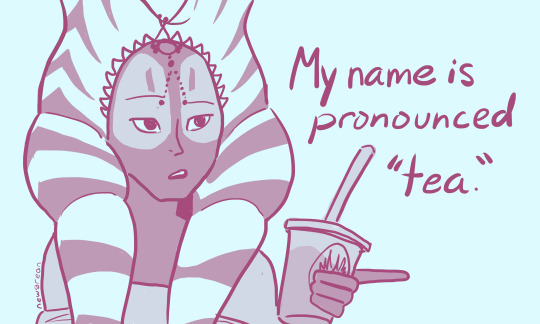

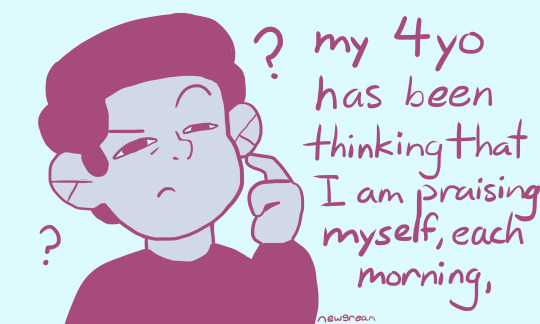

A comic inspired by this post:
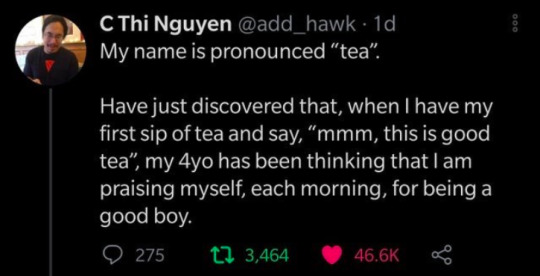
Image description below the cut!
A four-panel digital Star Wars fan comic.
1st panel: Jedi master Shaak Ti addresses the “camera” as if doing a personal interview on a sitcom. She holds a grande iced chai in her left hand and is pointing off to the side. She says, “My name is pronounced ‘Tea.’”
2nd panel: We see two people sitting at a table. On the left is a very young clone peeking over the table, looking at Shaak Ti who sits to the right. She is sipping her iced chai with a serene look on her face. Her dialogue from the previous panel continues, “Having just discovered that, when I have my first sip of tea and say, ‘Mm, this is good Tea...’”
3rd panel: We see a closeup of the young clone. His head is tilted, his eyes are squinted, one eyebrow is raised, and a quizzical finger rests on his chin. Question marks float in the air around him. The dialogue continues, “…my 4yo has been thinking that I am praising myself, each morning…”
4th panel: Over the top of the young clone’s head we see Shaak Ti continuing her serene tea sipping as she raises her right hand to give a thumbs-up. The dialogue finishes, “…for being a good Jedi.”
The bottom image is of a tweet by Twitter user C Thi Nguyen @add_hawk. The tweet reads, “My name is pronounced “tea.” Having just discovered that, when I have my first sip of tea and say, “mmm, this is good tea”, my 4yo has been thinking that I am praising myself, each morning, for being a good boy.”
1K notes
·
View notes
Text
Galeries libre service
Je pique l'idée de la merveilleuse @nuitdhiverasa et je vous laisse les quelques galeries (tenus ou non) des différentes personnes que j'ai ! Si jamais vous voulez graph dessus, n'hésitez pas ! Cela me fera toujours plaisir de voir des petites têtes que j'ai joué/je joue avoir des nouveautés !
Go Minsi Zhao lusi - Yuan NGC1961 (attention, nudité, maillot de bain etc) Yuan deuxième galerie. Lee Chaeyoung - Isa - STAY C Lee Nakyung- Fromis_9 Yoon Seeun - STAYC Jun Hyosung (ex secret) Lee Ahin (ex momoland) Lee Yeoreum - WJSN Xu Jiaqi Kim Yerim - Yeri - RED VELVET Thi Ngoc Nguyen Kim Jung Eun - @Luvjayne Yagi Arisa Moon Gayoung Ha Sooyoung - Yves (( EX Loona )) Naoi Rei - IVE Nana Ouyang Danielle Marsh - Newjeans Asaya Jurin - XG Park Minju - ILLIT
30 notes
·
View notes
Text
So I’m reading an article about social media gamification*, and it makes the claim that games “are the art form that works in the medium of agency.” I really like this definition, mostly because it made me realize my appreciation for games like Depression Quest is the same feeling as my appreciation for Lucio Fontana’s pieces with tears in the canvas:




*How Twitter Gamifies Communication, C. Thi Nguyen, Forthcoming
23 notes
·
View notes
Note
Have you read, or heard of, the book Games Agency as Art by C Thi Nguyen
I have not, but based on a quick internet search it sounds cool! :)
6 notes
·
View notes
Note
Has anyone on the Eureka team read Games: Agency as Art by C Thi Nguyen, or at least the first two chapters that lay out the core of the argument? If not, basically it's thesis is that games are artifacts of agency, in that they concentrate and allow us to focus in on different modes of our own agency. In other words it's an argument for the ludology side of the narratology vs ludology debate, but in the terms of analytic philosophy. It also covers games as capital-G Games, including video games, board games, ttrpgs, and so on and so forth. I'd be really interested in hearing your thoughts on it!
No i don’t think any of us have, and we probably won’t have time to look into it in the near future what with the Kickstarter and stuff, but we’re publishing this ask in case any of our fans or fellow creators would be interested.
3 notes
·
View notes
Text

A panel featuring four of Nia King's favorite artists: Sawyer Lovett, Joe Hatton, Vo Vo, and Cristy C. Road. Zines played a crucial role in reducing social isolation for many of us, whether we were one of the only punks of color in our scene (Nia in Boston, Joe in the Dakotas, and Vo in Sydney, Australia), or the only gay in our rural Virginia town (Sawyer). Cristy C. Road discusses growing up in Miami's predominantly Black and brown punk scene and using zines to process heartbreak and trauma.
Listen here. Read here. Donate here.
More zinesters you should know below:
Mimi Thi Nguyen, Jackie Wang, Lauren Jade Martin, Suzy X, Osa Atoe, Adee Roberson, Lawrence Lindell, Breena Nuñez, Ajuan Mance, the Queer Zine Archive Project, Jenna Freedman/the Barnard Zine Library, and many, many more.
4 notes
·
View notes
Text
youtube
Found this video and it made me mad but it's right
Earlier this year I read these articles by C. Thi Nguyen which reframed how I see art, and evidently, after I wrote this I couldn’t help but tell how much his writings had influenced my views on art. I think if you want to read more about this kind of thing, these are some great reads:
https://philpapers.org/rec/NGUTAO-8
https://philarchive.org/rec/NGUTAS
4 notes
·
View notes
Text
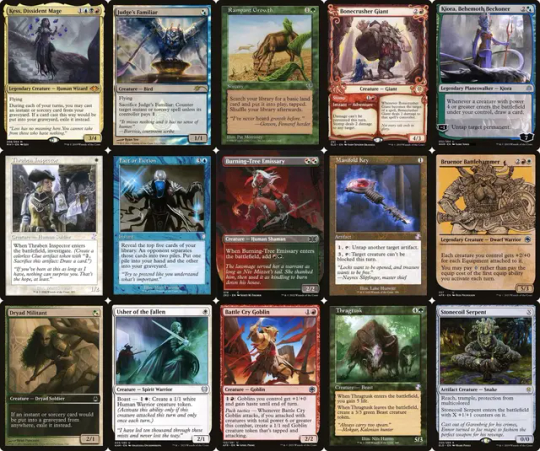
What forms of agency are present in this pack?
I don't know exactly what I mean yet. This is pre-work for a possible article influenced by C. Thi Nguyen's Games: Agency as Art. If I get a good idea of agencies, the next step would be identifying the aesthetic experience that those agencies foster.
Basic game actions: playing creatures; attacking; blocking.
Playing spells from graveyards
Judge's Familiar creates choices for both the controller and the opponent. Is countering this spell worth losing a 1/1 flyer and the future (vanishing) opportunity to counter something else? Is it worth playing around the onboard effect, or do I want to try clearing a path for future spells?
I'm not sure whether ramping itself meets my expectations for what counts as agency; or it may be encompassed in "basic game actions" (which count as agency, but aren't particularly interesting w/r/t cube design). Rampant Growth specifically creates the choice of which lands to grab, and gives you the ability to shuffle.
Bonecrusher Giant and this style of Adventure basically follow basic game actions. The choice of casting Stomp or the creature often feels trivial, and a damage spell is a basic game action.
Kiora and Manifold Key both add untapping to the agential space, which can allow a lot of new behavior.
Fact or Fiction is Fact or Fiction.
To be continued, maybe.
6 notes
·
View notes
Note
I saw your recent video essay/3 hour ttrpg understanding extravaganza and just. DAMN!
You're an excellent mind to listen to discuss a topic so near and dear to my heart. I'm a ttrpg designer with a couple little games; what's your reading list for ttrpg design as a topic? what books, videos, podcasts etc have shaped how you think? because i love the way you think, and would love to know more
Well hello, thank you for my first tumblr ask of all time. 😅 Congrats on tracking this blog down, and I'm glad you liked the video.
First of all, read Luke, Jared and Snow's blogs. Just read whatever strikes your fancy (https://lukegearing.blot.im/, https://jared.blot.im, nerves.games). Snow's most recent post is actually a reading list, I livestreamed a bunch of Luke's posts, and Jared is Jared. If Jared's ideas and opinions sound declarative, that's his voice. I think he dislikes half-committing to ideas, or couching his thoughts, and he has big opinions, so they can come off uh... standoffish? Unfriendly? But he's a big softie, I love him.
For proper philosophy, read Against Procedurality by Miguel Sicart (blog post: https://gamestudies.org/1103/articles/sicart_ap), and his book "Play Matters." His ideas on appropriation and playfulness have literally changed the way I move about the world in my day-to-day. Not every chapter is a banger, but it's good. The Forms and Fluidity of Play by Thi Nguyen is also great (https://gamephilosophy.org/pcg2014/wp-content/uploads/2014/11/C.-Thi-Nguyen-2014.-The-Forms-and-Fluidity-of-Game-Play-PCG2014.pdf), as is Cybertext: Perspectives on Ergodic Literature, even if it was written in the 90's. It's very readable, which is important, but also full of excellent ideas.
I'd also recommend um... just reading a lot of adventures. There's a lot of bad ones, but I trust you to form opinions! I'm currently reading Luke Gearing's Wolves Upon The Coast and loving it for different reasons than I loved his adventure The Isle. I'm a big fan of Mothership's instant classics Dead Planet and Pound of Flesh, and I hear the Warden's Manual in the upcoming Mothership boxed set will have some good practical advice. Dread Manse by Micah Anderson was a recent read I liked a lot. I also love/hate/love Orbital Intelligence, but buyer beware: it's a weird as fuck bibliography. XD Dip a toe in as a treat, and treat all of them (including Crapland) at least a little bit seriously.
Also go watch my Zedeck Siew video and pick up a copy of whatever you think sounds coolest. Spy in the House of Eth is a good start, alongside Lorn Song of the Bachelor and of course Reach of the Roach God (which I haven't read yet, but is available at spearwitch.com). This one's a bit sad because of some recent drama, but the books are still good. Oh, and go listen to the Adventure Tourism podcast, and if my episode on Deep Carbon Observatory sounds cool, go read the original (NOT THE REMASTER).
I will say: Don't read any rulebooks for context. Vanilla Game is alright, but people (including me) have said some really Forge-y stuff about Mothership's mechanisms, DCC is huge and its spells aren't especially fun to read, Best Left Buried is... like, I don't want to say anything bad about it because I was (under)paid to edit it, but ehh.
I say that because a lot of those adventures are for """"OSR"""" games, which people say are inherently high-lethality. This is almost always parroted and twisted to be More Forge Bullshit. The rules don't matter. Most of them are D&D clones in lipstick. I recommended adventures (not rulesets) because they're easily appropriated. Just ask how you would use any piece of them at your table, or how you would change them to fit you or your table. It's a good way to play! It's an inherent part of play. I've said it a million times, but my Mothership home game is 2% Alien, 98% Cowboy Bebop, because fuck the rulebook. I don't like the stress and panic rules anymore. Sorry, Sean!
Let me know if this is coherent or helpful at all, and thanks again for the ask. :)
5 notes
·
View notes
Text
When a dancer or piece of choreography lacks harmony, a body of literature centuries old can offer guidance. Zapatismo and Jineology, Black Power and Indigenous stewardship, AIDS activism and situationism have so much to teach us about community organizing across time and space, yet somehow we lack the pedagogy to apply their teachings in our day-to-day activism. What do these movements have to teach us about choreographing for the long haul? What does Ste-Émilie have to contribute? What does it mean to approach movement building as an artistic practice?
1 note
·
View note
Text
Podcast #930: Break Your Bad Habits by Escaping the Scarcity Loop
Everyone has some bad habits, and they nearly always involve doing something too much. Eating too much, drinking too much, buying too much, looking at your phone too much. Why do we have such a propensity for overdoing it? My guest says it’s all thanks to a “scarcity loop” that we’re hardwired to follow. Once you understand how this loop works, you can start taking action to resist the compulsive cravings that sabotage your life. Michael Easter is the author of Scarcity Brain: Fix Your Craving Mindset and Rewire Your Habits to Thrive with Enough. Today on the show, Michael unpacks the three parts of the scarcity loop, and how they’ve been amplified in the modern day. We talk about the slot machine lab that corporations use to hack your brain, why your main problem may be that you’re understimulated rather than overstimulated, why addiction may be better thought of as a symptom rather than a disease, how the quantification and gamification of life can negatively impact your experience of it, and how ultimately, the fix for resisting your bad habits is having something better to do than chase the cheap, unsatisfying hits of pleasure our culture so readily offers. Resources Related to the Podcast * Michael’s previous appearance on the AoM podcast: Episode #708 — Overcome the Comfort Crisis * AoM Article: Via Negativa — Adding to Your Life By Subtracting * Research of Thomas Zentall * Research of C. Thi Nguyen * Sally Satel * Maia Szalavitz * AoM Article: The Groundhog Day Diet — Why I Eat the Same Thing Every Day * AoM Podcast #636: Why You Overeat and What to Do About It * Sunday Firesides: Tidying Up Our Gilded Cages Connect With Michael Easter * Michael’s website * Michael on Instagram * Michael on Twitter Listen to the Podcast! (And don’t forget to leave us a review!) Listen to the episode on a separate page. Download this episode. Subscribe to the podcast in the media player of your choice. Transcript Coming Soon The post Podcast #930: Break Your Bad Habits by Escaping the Scarcity Loop appeared first on The Art of Manliness. http://dlvr.it/SwgfHC
2 notes
·
View notes
Text
Books of 2023
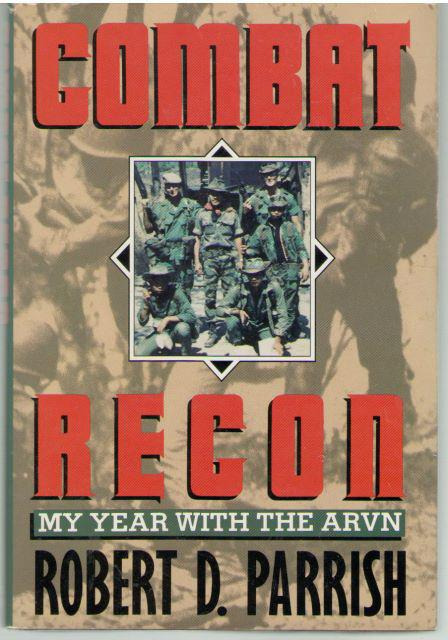
Book 33 of 2023
Title: Combat Recon Authors: Robert D. Parrish ISBN: 9780312927134 Tags: A-1 Skyraiders, AC-47 Spooky, B-52 Stratofortress, Dust off, F-4 Phantom II, FAC, Medevac helicopter, Nungs, O-1 Bird Dog, Rangers, US USA 14th Infantry Regiment, US USA 14th Infantry Regiment - 2/14, US USA 14th Infantry Regiment - 2/14 - A Co, US USA 14th Infantry Regiment - 2/14 - B Co, US USA 1st ID, US USA 25th ID, US USA ASA Army Security Agency, US USA LRRP Team (Vietnam War), US USA United States Army, US USMC United States Marine Corps, USN LCM-8 Mike Boat, VNM 1968 Tet Offensive (1968) (Vietnam War), VNM An My, VNM An Son, VNM Ap Dong, VNM Ap Nha Viec, VNM Ba Lua River, VNM Ban Me Thuot, VNM Battle of Saigon (1968) (Tet Offensive) (Vietnam War), VNM Bien Hoa, VNM Binh Duong Province, VNM Binh Long Province, VNM Bo Duc, VNM Bung, VNM Chon Thanh, VNM Cu Chi, VNM DRV NVA 33rd Regiment, VNM DRV NVA 33rd Regiment - 1/33, VNM DRV NVA North Vietnamese Army, VNM DRV VC 271st Regiment, VNM DRV VC 272nd Regiment, VNM DRV VC 273rd Regiment, VNM DRV VC 2nd Dong Nai Regiment, VNM DRV VC 2nd Dong Nai Regiment - 2nd Bn, VNM DRV VC 95-C Regiment, VNM DRV VC 9th Division, VNM DRV VC Phu Loi Bn, VNM DRV VC Viet Cong, VNM Go Chua, VNM Hau Nghia, VNM Highway 13, VNM Highway 21, VNM Highway 8-A, VNM III Corps (Vietnam War), VNM Iron Triangle (Vietnam War), VNM Lai Khe, VNM Lai Khe - Claymore Corners (Vietnam War), VNM Lam Son, VNM Lam Son - MAT-70 Gosney Compound (Vietnam War), VNM Lam Son Secret Zone (Vietnam War), VNM LBJ Long Binh Jail - USARVIS US Army Vietnam Installation Stockade (Vietnam War), VNM Loc Ninh, VNM Long Binh Post (Vietnam War), VNM Nha Trang, VNM Operation Arc Light (1965-1973) (Vietnam War), VNM Paris Tan Quy, VNM Phu Cuong, VNM Phu Hoa, VNM Phu Hoa Dong, VNM Phu Huu, VNM Phu Loi, VNM Phu Van, VNM Phuoc Long Province, VNM Rach Tra, VNM RVN ARVN 1st Armored Cavalry Sqd, VNM RVN ARVN 5th ID, VNM RVN ARVN 5th ID - 5th Recon Co., VNM RVN ARVN 5th ID - G-2 Recondo Co, VNM RVN ARVN 7th Regiment, VNM RVN ARVN 7th Regiment - 1/7, VNM RVN ARVN 7th Regiment - 3/7, VNM RVN ARVN 7th Regiment - 3/7 - 10th Co, VNM RVN ARVN 7th Regiment - 3/7 - 11th Co, VNM RVN ARVN 7th Regiment - 3/7 - 9th Co, VNM RVN ARVN 7th Regiment - 4/7, VNM RVN ARVN 8th Regiment, VNM RVN ARVN 8th Regiment - 1/8, VNM RVN ARVN 8th Regiment - 4/8, VNM RVN ARVN 9th Regiment, VNM RVN ARVN 9th Regiment - 3/9, VNM RVN ARVN An Son Camp, VNM RVN ARVN Army of the Republic of Vietnam, VNM RVN ARVN Paris Tan Quy Camp, VNM RVN ARVN Phu Hoa Compound, VNM RVN ARVN RF/PF Regional Forces/Popular Forces (Vietnam War), VNM RVN ARVN Tan Thanh Dong Camp, VNM RVN ARVN Vietnamese Rangers - Biet Dong Quan, VNM RVN Chieu Hoi Program/Force 66 - Luc Luong 66 (Vietnam War), VNM RVN Kit Carson Scouts (Vietnam War), VNM RVN Nguyen Van Thieu, VNM RVN SVNAF South Vietnamese Air Force, VNM RVN VNN Republic of Vietnam Navy, VNM RVN VNN River Patrol Force, VNM RVN VNN RPF RAG River Assault Group, VNM Saigon River, VNM Tam Ne, VNM Tan Hoa, VNM Tan Thanh Dong, VNM The Hook (Vietnam War), VNM Thi Tinh Stream, VNM US MACV Advisory Team 70 (Vietnam War), VNM US MACV Advisory Teams (Vietnam War), VNM US MACV CORDS Civil Operations and Revolutionary Development Support (1967-1975) (Vietnam War), VNM US MACV Military Assistance Command Vietnam (Vietnam War), VNM US UH-1 Huey Firefly Missions (Vietnam War), VNM US USA 93rd Evacuation Hospital - Long Binh (Vietnam War), VNM US USA Phu Loi Air Base (Vietnam War), VNM Vietnam, VNM Vietnam War (1955-1975) Rating: ★★★★ (4 Stars) Subject: Books.Military.20th-21st Century.Asia.Vietnam War.ARVN, Books.Military.20th-21st Century.Asia.Vietnam War.Specops.ARVN, Books.Military.20th-21st Century.Asia.Vietnam War.US Army.Advisor
Description: In 1968, Parrish became a legend among the Vietnamese troops he was sent to train. From setting up ambushes to dropping grenades from the back of a plane to plunging into one ground fight after another, he took extraordinary chances and broke every rule in the book to wage a war few other Americans dared. "A dead honest, often riveting memoir".--Kirkus. Photographs. Martin's.
Review: Let me start by saying this was a really good book, and I'm sorry that we never got a follow up of his time with an Army unit. Well written, engaging, and informative, it was a nice complement to Combat Advisor by Carl Farren.
#Books#Ebooks#Booklr#Bookblr#Vietnam War#ARVN#South Vietnam#US Army#History#Military History#Non Fiction
4 notes
·
View notes
Quote
Frazier concludes that, whether in the black press or in business, “the black bourgeoisie have shown no interest in the ‘liberation’ of Negroes”—that is, unless “it affected their own status or acceptance by the white community.” At every opportunity, “the black bourgeoisie has exploited the Negro masses as ruthlessly as have whites.” Frazier surely overstates things here, but his book is a window into a common phenomenon. To better understand the broader dynamic, we can look to philosopher C. Thi Nguyen’s work on games. As he explains in his new book Games: Agency as Art (2020), confusing the real world with the carefully incentivized structure of game worlds can lead to a phenomenon he calls “value capture,” a process by which we begin with rich and subtle values, encounter simplified versions of them in social life, and then revise our values in the direction of simplicity. Nguyen is careful to point out that value capture doesn’t require anyone’s deliberate or calculated intervention, only an environment or incentive structure that encourages excess value clarity. Nguyen stops short of noting that another risk of gamifying values is the unequal distribution of power across participants. But outside of the world of games, power differentials do shape outcomes. Value capture is managed by elites, on purpose or not. In other words, elites don’t simply participate in our community; their decisions help to structure it, much in the way that game designers structure the world of games. After all, elites face a simpler version of oppression than non-elites do: whereas working-class black folk are pressed by racial slights and degradation alongside economic problems that might require “socialized medicine” to solve, elites’s economic position makes them comfortable enough to focus on their own status and cultural power—often at the expense of non-elites.
Identity Politics and Elite Capture - Boston Review
5 notes
·
View notes
Quote
Transparency asks us to operate according to principles and policies that we can make explicit to the public. But real expertise involves going beyond such explicit principles.
C. Thi Nguyen
2 notes
·
View notes